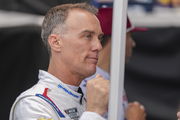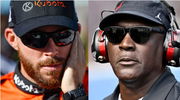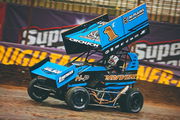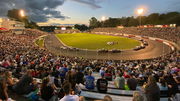
USA Today via Reuters
Feb 19, 2024; Daytona Beach, Florida, USA; NASCAR Cup Series drivers Austin Cindric (2), Chase Elliott (9) go low to avoid the crashing cars of Joey Logano (22), Daniel Suarez (99), Todd Gilliland (38), Brad Keselowski (6), Martin Truex Jr (19) and Ryan Blaney (12) during the Daytona 500 at Daytona International Speedway. Mandatory Credit: Mark J. Rebilas-USA TODAY Sports

USA Today via Reuters
Feb 19, 2024; Daytona Beach, Florida, USA; NASCAR Cup Series drivers Austin Cindric (2), Chase Elliott (9) go low to avoid the crashing cars of Joey Logano (22), Daniel Suarez (99), Todd Gilliland (38), Brad Keselowski (6), Martin Truex Jr (19) and Ryan Blaney (12) during the Daytona 500 at Daytona International Speedway. Mandatory Credit: Mark J. Rebilas-USA TODAY Sports
NASCAR races are exhilarating displays of speed, strategy, and sometimes spectacular crashes. But the high-octane action comes at a cost—a cost that can range from a few thousand dollars to the equivalent of building a new car. When your favorite race car goes flying into the wall, both you and the team become anxious. Firstly, the race is lost, and secondly, big bills are on the way for the team. Are the cars not insured? Joe Gibbs Racing president Dave Alpern discloses an X post.
Watch What’s Trending Now!
“When a car wrecks, it’s on us,” not just for JGR but for every team on the grid
Imagine the roar of engines and the anticipation in the air as 68 cars lined up at the starting line of the Daytona Modified Sportsman Race at Daytona Beach Speedway in Florida in 1960. Among the field were future legends Junior Johnson, Ralph Earnhardt, and Edward Glenn “Fireball” Roberts. The race promised thrills and excitement, but what unfolded was a spectacle of chaos and mayhem.
ADVERTISEMENT
Barely two minutes into the race, on the fourth turn of the first lap, disaster struck. In what has been called the worst wreck in NASCAR history, 37 cars were involved in a massive pileup. Miraculously, there were no fatalities; the sheer scale of the destruction was unprecedented, and the incident left a lasting impact on NASCAR. This event led NASCAR to reduce the number of cars in a race to 43, aiming to enhance safety and prevent such large-scale accidents in the future.
However, so many cars went out of shape, and the loss to the teams could also be one of the reasons for the big change by the organizing body, back then. Not to mention, every race is an absolute thriller, with a crash potentially around every corner. This inevitably means bills worth thousands for repairs. Who pays them? According to Alpern, “When we wreck a car, no, we don’t have an insurance policy on that car. We’ve got to replace it ourselves.” Unfair, right? Even knowing the smallest of wrecks we see every weekend.
View this post on Instagram
ADVERTISEMENT
Insurance companies thrive on predictability, but the inherent danger of racing makes calculating the risk for a NASCAR car nearly impossible. The premiums would likely be astronomical [comparing it to our cars], potentially exceeding the value of the car itself. As the JGR supremo notes, “We buy parts and pieces and put the cars together, and you can imagine an insurance policy on a race car would probably be more expensive than the car itself.”
This financial pressure can be immense on these teams, especially the smaller yet newer ones. A single, serious crash can make the difference between a successful season and a financial struggle. The lack of traditional car insurance doesn’t mean teams are completely on their own. Alpern, further explaining the same, said, “Obviously, we’ve got some insurance policies for our whole company, but they are not broken down for individual cars when they wreck.”
ADVERTISEMENT
Top Stories
Exclusive: Catching Up With ‘The Dinger’ — the Past, Present and Future of AJ Allmendinger

“I’d Be Dead”: NASCAR Legend Credits Kevin Harvick for Saving His Life

“I’m Worried” – Ross Chastain Confesses Fears of Triggering Michael Jordan’s Lawsuit Wrath With Humble 3-Word Claim

Chaotic Brawl Breaks Out at Tulsa Shootout After Teen Flips Off Rival Driver

Historic NASCAR Track to Change Its Iconic Name as City Council Moves to Auction It Up

What happens to a NASCAR car post-wreckage?
As the saying goes, ‘One man’s garbage is another man’s treasure’. Even if the wrecked car looks like a pile of metal, there might still be value left in it. As Alpern stated, “We either throw the parts away, or sometimes we can reuse them.”
Additionally, how much of the car can be reused depends on the level of damage it has incurred. In a previous video, JGR stated that the car is disassembled, salvageable parts are saved, and the rest is discarded.
ADVERTISEMENT
All in all, NASCAR cars are expensive, and wreckage is a sad yet thrilling part of the game. The high cost of wrecks adds another layer of strategy to the world of NASCAR. Teams must not only focus on winning races but also carefully manage their budgets to account for the potential financial blow of a crash. This constant risk-reward calculation is what makes NASCAR such a thrilling sport, both on and off the track.
ADVERTISEMENT
ADVERTISEMENT
ADVERTISEMENT

